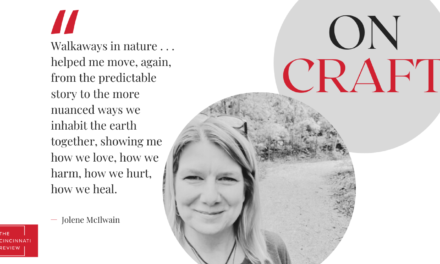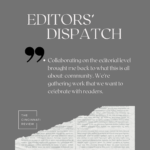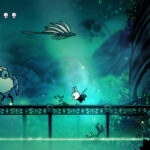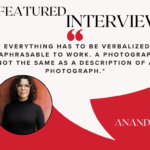
Assistant Editor Kate Jayroe: At the beginning of The Great Gatsby, Nick Carraway states, “In my younger and more vulnerable years my father gave me some advice that I’ve been turning over in my head ever since.” Already, there’s tension. How will the narrative uphold or refute this advice? Narrative tension like this is used to invest the reader into discovering what happens.
Full Disclosure: I wouldn’t say narrative tension is my strong suit when writing fiction. Voice is always gonna be a big deal for me. Sound? That’s huge. Let me look all day at a few sentences, here and there. But it’s a bit funny for me to be expounding on narrative tension. And so, the narrative tension of this blog post is revealed. Ha!
As a writer I find myself slipping and straying from remembering how to create narrative tension. As a reader, as an editor, I’m well-versed and appreciative of diverse means of exhibiting tension. Here are some modes of considering it:
Time
There’s “The Clock,” which finally clicked for me in Chris Bachelder’s graduate fiction workshop here at UC in fall semester of 2023. We explored stories with a wide variety of craft objectives, all uniquely using the notion of time as an intuitive source of tension.
A deadline. A story takes place in a single day, during a car ride, over one egg, etc. In Bachelder’s novel The Throwback Special, a group gathers annually on the weekend of a 1985 football play by Joe Theismann. It’s clear from the beginning of the novel that the narrative is contained to one weekend, and the football play providing the impetus for this weekend-long gathering is itself only a few seconds long. From the outset, we know the clock is running.
Temporal Subversion and Paradox
Narrative time can be subverted. The more I consider craft, the more I think we’re studying how to identify and harness wondrous paradoxes of creativity. A story could begin: “After This Character died, things were never the same.” So, tension is undercut right out but simultaneously maximized. Any reader is undoubtedly curious about This Character’s demise. Okay, great.
Angularity
Narrative tension can be achieved through angularity, which in fiction is comprised of purposeful contrast, as we also discussed in that workshop. A story with tragic plot points has hilarious dialogue. The horror story has a sexy thematic charge to it. An unlikeable character elicits great sympathy.
Form
Form can be a primary source of narrative tension!
In flash, there’s formal tension in executing a space-constrained narrative. Each word is going to (subtly) teach the reader how to read it. Writing a high-volume fantasy series? You invent entire civilizations then research your own inventions into compendium.
Can one unlikely hero alter the course of history in such a rich and storied universe? That one question can easily constitute multiple books. Tension!
If You Struggle with Narrative Tension
You can wait until revision to worry about it. I’ve found that if I go into revision with specific targets for the work (like tension), then that process is a productive problem-solving session that I’m eager to dive into.
Seeking outside readers can also help with troubleshooting narrative tension. Workshop is this beautiful, ephemeral space where people interpret your work. We learn so much from readers. Colleagues more expert in narrative tension offer perspective, and then later I can consider and synthesize them with my fiction’s specific language, whimsies, and logic.
I’d also recommend briefly revisiting your favorite published works of fiction and quickly identifying the strategies used to create and uphold narrative tension. Seeing it done in a familiar piece can unlock all sorts of mental creative pathways.
Narrative tension as deployed through time, angularity, and form can help writers to portray inherent tension within their prose. Having explored these and offered up some advice, I am feeling, in real time, the simultaneous release of this blog post’s tension and the desire to draft up something new. Here’s hoping that you come away feeling inspired as well!










